#buff-crested bustard
Explore tagged Tumblr posts
Text

[1889/10977] Buff-crested bustard - Lophotis gindiana
Order: Otidiformes (bustards) Family: Otididae
Photo credit: Luke Seitz via Macaulay Library
235 notes
·
View notes
Text


Today’s bird is this Buff-Crested Bustard
109 notes
·
View notes
Photo
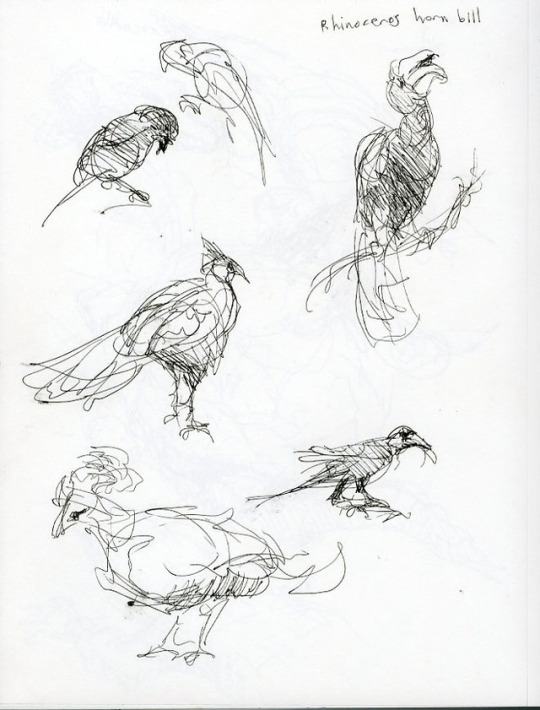
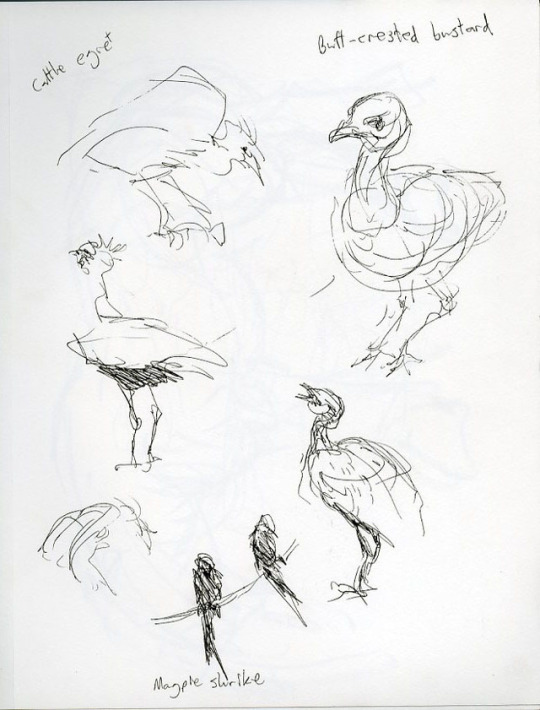
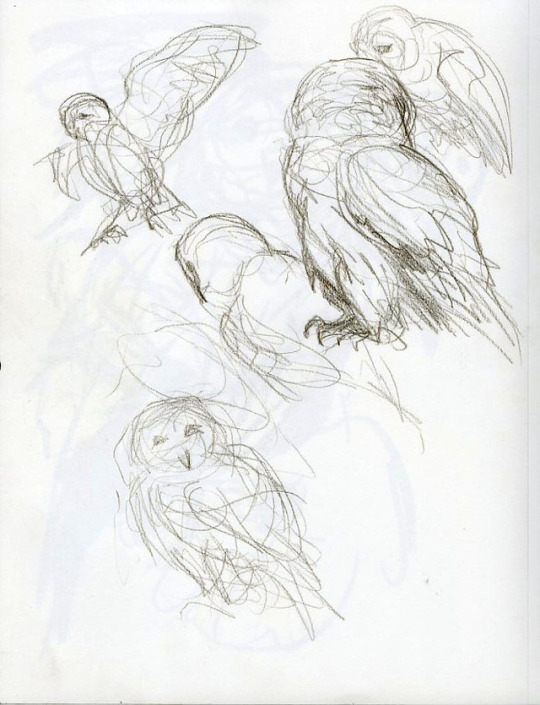
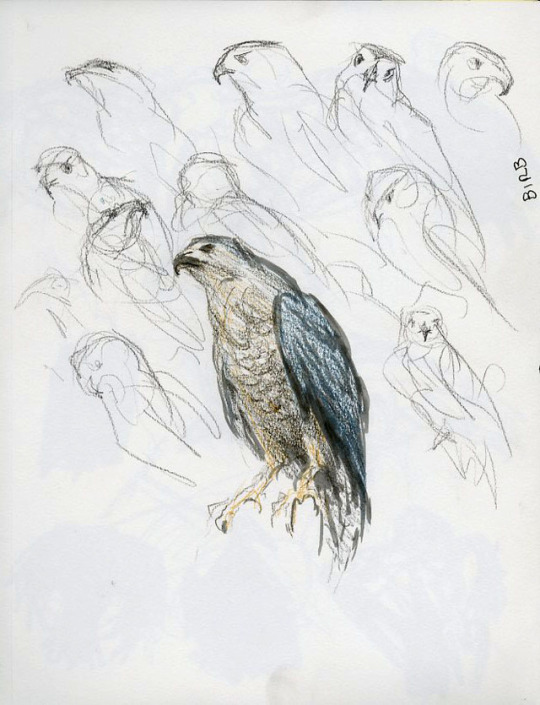
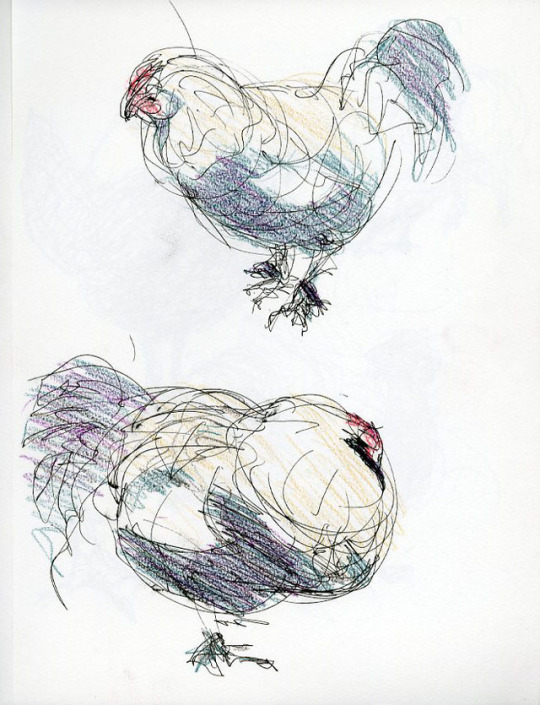
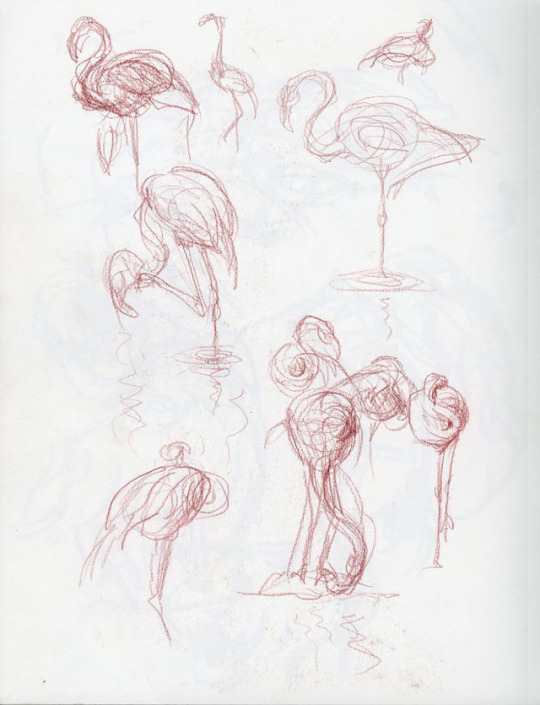
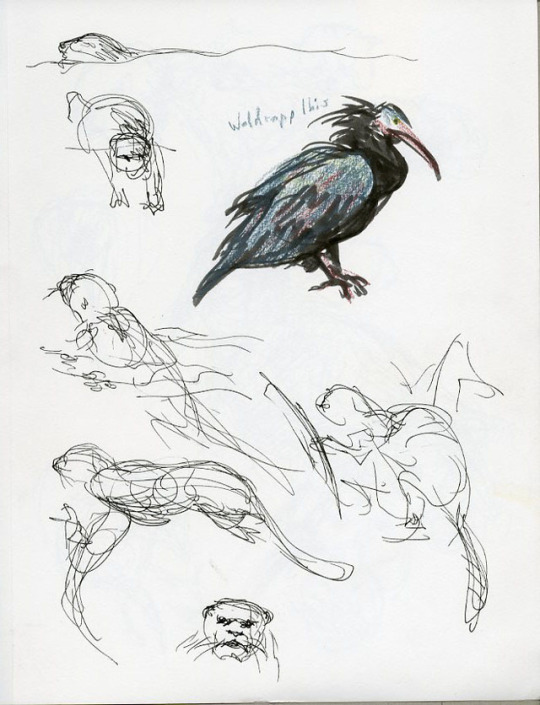
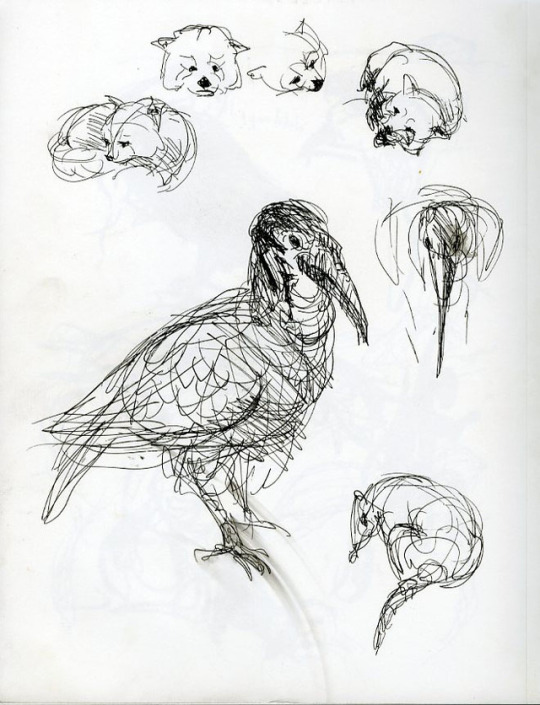
Spring 2016: animal drawings (birds, from life)
Today’s post is brought to you by Buff-Crested Bustard & Co.
#art#artists on tumblr#artwork#drawing#draw#drawings#sketch#sketching#sketches#sketchbook#animals#birds#bird#hornbill#bustard#owl#hawk#rooster#flamingo#ibis#animal drawing#life drawing#Aubrey#aubrey brown#aubrey brown art#illustration#illustrators on tumblr
9 notes
·
View notes
Photo
I... get the powers of a buff-crested bustard (a bird)... yay???

What is it?
94K notes
·
View notes
Text
Name a single buff crested bustard that is not a ✴hoe✴
0 notes
Text

Birds of South Africa. The Kori Bustard is Africa's heaviest flying bird and can weigh up to 19kg. It is a land bird with long neck and long foot ended by three fingers with light brown or grey plumage. The sides of the crown on the head extend into a black crest. There is a white stripe over each eye. The chin, throat, and neck are creamy white mixed with black bands. The underparts of the bird are buff colored with dark brown vermiculations. The tail has wide bands of grayish brown and white. The primaries, or flight feathers, are also similarly marked. The shoulder area has a checkered black and white pattern.... .#wildlife #birdlife #southafrica #photosafari #tourism #safari #extremefrontiers #bush #adventure #holiday #vacation #tourist #travel
0 notes
Text
ECOCORE The Queer Issue

cover 1: Exene Karros @donaldtrompeloeil
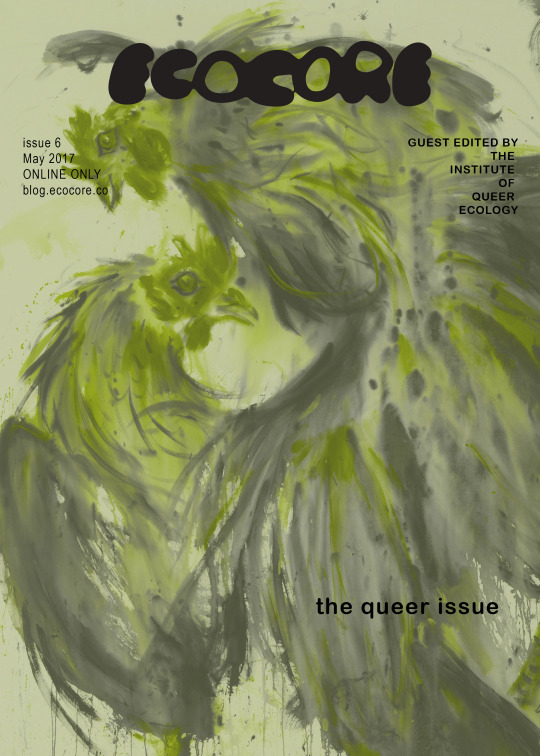
cover 2: Andrej Dubravsky @andrej_dubravsky

cover 3: Caspar Jade Heinemann @angstravaganza
ECOCORE is proud to announce issue 6, an online only issue dedicated to queer strategies in nature. Following the US withdrawal from the Paris Climate Agreement it is urgent to find new approaches to ecology and environmentalism. Starting today @ blog.ecocore.co
Queerness is not yet here. Queerness is an ideality. Put another way, we are not yet queer. We may never touch queerness, but we can feel it as the warm illumination of a horizon imbued with potentiality. We have never been queer, yet queerness exists for us as an ideality that can be distilled from the past and used to imagine a future. -José Esteban Muñoz, Cruising Utopia: The Then and There of Queer Futurity Ecocore’s sixth issue, The Queer Issue, guest edited by The Institute of Queer Ecology (IQECO), operates at the intersection of queer and environmental discourse, with a mission to improve both fields. Each movement, perpetually evolving though not fast enough, benefits from being in conversation with the other. Yesterday I found myself at one of the last shows of the Ringling Bros. and Barnum & Bailey Circus, in Providence, Rhode Island. I had just left a meeting with two other members of IQECO, where we discussed the types of invisible labor being done by plankton (plus other microbial Foundation Species) and queer (human) communities. When I arrived at the circus, then, I found myself still burdened with criticality. When the lights went out and spotlights hit a cage in the center of the arena, 12 tigers were sitting on stools and I braced myself for an unnerving show. A large man with dueling whips lashed the tigers, ordering the cats to jump, roar, stand, and move about. I sank lower into my chair, feeling rather microbial as a crowd of thousands clapped and screamed in excitement at the spectacle of human supremacy. Earlier, as the National Anthem had boomed, a lesbian couple sat down next to me and I let out a sigh of relief. The three of us would form an instant unspoken alliance for the next 3 hours, silently critiquing the The Greatest Show on Earth. So when the 12 tigers began leaping in fear of a man who commanded them and the audience into a frenzy, I looked towards my newfound queer sisters. I was disappointed to see that they too were cheering, hand in hand. I lay out this anecdote to highlight the dangerous rift still standing between queer and environmental justice. I expected the couple next to me to naturally align themselves with the subjugated tigers, rather than with oppressive man. But as critical conversations about ecology and queerness are still far from the mainstream, this way of thinking takes time and dedication. Eventually, I believe it will prove incredibly helpful for both the lgbt+ community and the natural world. This new alignment allows queer individuals to find kin with any oppressed species, many of which are queerer than we imagined. While tigers have not yet been observed to engage in homosexual behavior, at least another 1,500 species have, including lions, where homosexual and trans individuals have been recorded. Our simplified collective understanding of human gender and sexuality collapses on itself when we are confronted by a fungus with 28,000 sexes. Catriona Sandilands states (while discussing the works of Elizabeth Wilson and Myra Hird) that “nonhuman sexual and gender diversity both calls into question human exceptionalism and destabilizes notions of identity, authenticity, and technology on which modern categories of human sexual orientation rest.” The research is overwhelming and powerful, as exemplified by the enduring influence of Bruce Bagemihl’s seminal text, Biological Exuberance. Bagemihl’s book about animals with homosexual tendencies was used as evidence by the American Psychiatric Association before the US Supreme Court in Lawrence v. Texas, a case that ultimately struck down sodomy laws in 14 states. The Queer Issue presents IQECO’s inaugural attempt to present a sliver of this growing body of research, as well as works by artists that consider this hybridized way of thinking. The Queer Issue is assembled eclectically, with republished texts by Bruce Bagemihl that have heavily influenced the field, as well as original commissions for the occasion of this issue. Liby Hays will present a collection of four poems from the perspective of a Trans Termite Queen. Briohny Walker will contribute a new paper on an ethics of failure and futurelessness. Greta Skagerlind invites you to contribute to their ever-growing in-flux definition of Queer Design Principles via a collaborative google doc. Ryan Hammond will talk about their ongoing work, Open Source Gender Codes, which attempts to queer current regimes of pharmaceutical production and systems of ownership by producing open source hormone production protocols. Ecocore and IQECO welcome you to The Queer Issue. Edited by Lee Pivnik for the Institute of Queer Ecology Bruce Bagemihl Urban Barnyard Alessandro Bava Andrej Dubravsky Ryan Hammond Liby Hays Caspar Heinemann Alex Ju Exene Karros Les U. Knight / VHEMT Lee Pivnik Isabella Rossellini Jack Schneider Greta Skagerlind Briohny Walker Additionally, we would like to out our non-human contributors. The following is a list of animals that have been recorded exhibiting either homosexual or transgender behavior, assembled by Bagemihl in his 1999 publishing of Biological Exuberance. Their vibrant and diverse existence reminds us with force that we are not alone in our queerness, but should our species continue to encroach on their habitats, we may find ourselves increasingly lonesome. Acorn Woodpecker Addax Antelope Adelie Penguin African Buffalo African Elephant African jacana African swallowtail butterfly Agile Wallaby akepa Allen hummingbird Amazon Molly Amazon River Dolphin see Boto American Bison American kestrel angelfish Anna’s Hummingbird ant Aoudad Aperea arctic tern Asiatic Elephant Asiatic Mouflon Atlantic Spotted Dolphin Australian noisy miner Australian raven Australian Sea Lion Australian Shelduck avocet Aztec Parakeet badger Bank Swallow Barasingha Barbary Sheep Barn Owl barn swallow bat bearded seal beaver Beluga Bengalese Finch (Domestic) bewick’s swan Bezoar Bharal Bicolored Antbird Bighorn Sheep bird of paradise black-and-white warbler Black Bear Black-billed Magpie Blackbuck black-capped chickadee black-capped lorikeet Black-crowned Night Heron Black-footed Rock Wallaby black-headed grosbeak Black-headed Gull Black-rumped Flameback Black Stilt Black Swan Black-tailed Deer black-tailed gull black-tailed prairie dog Black-winged Stilt Blue-backed Manakin Blue-bellied Roller blue-billed duck bluebird bluejay Blue Sheep see Bharal bluethroat Blue Tit Blue-winged Teal boat-tailed grackle Bonnet Macaque Bonobo Boto Bottlenose Dolphin bowerbird Bowhead Whale Bridled Dolphin Brown Bear see Grizzly Bear brown booby Brown Capuchin Brown-headed Cowbird Brown Long-eared Bat brown noddy Brown Rat Budgerigar (Domestic) Buff-breasted Sandpiper bufflehead duck burro Bush Dog butterfly Calfbird California Gull California sea lion Canada Goose canary Canary-winged Parakeet Caribou Caspian Tern cassowary Cat (Domestic) Cattle (Domestic) Cattle Egret centipede Chaffinch Cheetah Chicken (Domestic) Chiloe Wigeon chimney swift Chinese water deer clapper rail Cliff Swallow Collared Peccary Commerson’s Dolphin Common Brushtail Possum Common Chimpanzee Common Dolphin Common Garter Snake Common Gull Common Marmoset Common Murre Common Pipistrelle Common Raccoon Common Shelduck Common Tree Shrew coral goby cormorant Costa’s hummingbird cottontail rabbit Cotton-top Tamarin coyote coypu Crab-eating Macaque crane crane fly Crane spp. Crested Black Macaque crow Cui curlew cutworm Dall’s Sheep see Thinhorn Sheep Damaraland mole-rat Daubenton’s Bat Dayak fruit bat Desert Tortoise dipper Dog (Domestic) Doria’s Tree Kangaroo dragonfly Dragonfly spp. Dugong Dusky Moorhen Dwarf Cavy Dwarf Mongoose eagle earthworm Eastern Bluebird Eastern Cottontail Rabbit Eastern Gray Kangaroo echidna Egyptian Goose eider duck Eleanora’s falcon Elegant Parrot Elk see Wapiti emperor penguin Emu Euro European Bison see Wisent European jay European Shag falcon Fallow Deer False Killer Whale Fat-tailed Dunnart finch Fin Whale firefly fisher Flamingo fox fox squirrel frog, poisonous fruit bat Fruit Fly spp. fulmar Galah garter snake gecko Gelada Baboon Gentoo Penguin giant cowbird giant river otter Giraffe glaucous-winged gull Goat (Domestic) Golden Bishop Bird golden eagle golden lion tamarin Golden Monkey Golden Plover Gorilla Grant’s Gazelle Gray-breasted Jay Gray-capped Social Weaver gray-cheeked mangabey Gray-headed Flying Fox Gray Heron Gray Seal Gray Squirrel Gray Whale great bustard Great Cormorant great crested flycatcher great egret Greater Bird of Paradise greater painted-snipe Greater Rhea great tit Green Sandpiper Greenshank Greylag Goose Griffon Vulture Grizzly Bear grouper grouse Guianan Cock-of-the-Rock Guillemot see Common Murre Guinea Pig (Domestic) Hamadryas Baboon hamlet Hammerhead Hamster (Domestic) Hanuman Langur Harbor Porpoise Harbor Seal hare Harris’s hawk Harris’s sparrow hawk hawkmoth hedgehog heron Herring Gull Himalayan Tahr Hoary-headed Grebe Hoary Marmot honeybee hooded pitohui Hooded Warbler Horse (Domestic) house martin House Sparrow Humboldt Penguin humbug damselfish humpback whale hyena Indian Fruit Bat Indian Muntjac Indian Rhinoceros Ivory Gull jabiru stork jacana Jackdaw jackrabbit Japanese Macaque Japanese sea raven Javan wart snake Javelina see Collared Peccary jellyfish kalanga parrot Kangaroo Rat kentish plover Kestrel Killer Whale king bird of paradise King Penguin kit (blue) fox Kittiwake kiwi Koala Kob lantern bass lantern fish Lapland longspur lapwing Larga Seal see Spotted Seal Laughing Gull Laysan Albatross Least Chipmunk Lechwe lemming lesser black-backed gull Lesser Bushbaby Lesser Flamingo lesser kestrel Lesser Scaup Duck lesser yellowlegs Lion Lion-tailed Macaque Lion Tamarin Little Blue Heron Little Brown Bat Little Egret Livingstone’s Fruit Bat Long-eared Hedgehog Long-footed Tree Shrew Long-legged Fly spp. long-tailed duck Long-tailed Hermit Hummingbird long-tailed manakin loon lorikeet lucifer hummingbird lunulated antbird magnificent hummingbird Mallard Duck marabou stork marbled murrelet Markhor marmoset marsupial mouse Marten sp. Masked Lovebird Matschie’s Tree Kangaroo Mazarine Blue Mealy Amazon Parrot Mew Gull see Common Gull Mexican Jay see Gray— breasted Jay mink Mocó Mohol Galago see Lesser Bushbaby mole mole-rat mole-vole Monarch Butterfly monitor lizard Montagu’s harrier Moor Macaque Moose moth Mountain Goat mountain lion Mountain Tree Shrew Mountain Zebra Mule Deer murre Mustached Tamarin mustached warbler Musk Duck Musk-ox Mute Swan naked mole-rat natal robin Natterer’s Bat New Zealand fur seal New Zealand Sea Lion nightjar Nilgiri Langur Noctule North American Porcupine Northern Elephant Seal Northern Fur Seal northern jacana northern lapwing Northern Quoll northern rough-winged swallow Ocellated Antbird Ocher-bellied Flycatcher Olympic Marmot one-wattled cassowary opossum Orange Bishop Bird Orange-fronted Parakeet Orang-utan Orca see Killer Whale oriole Ornate Lorikeet osprey Ostrich owl oyster
1 note
·
View note
Text
Kenya Birdwatching Safaris, Kenya Birding Tour

Kenya Birdwatching Safaris, Kenya Birding Tour
KENYA FOR THE KEEN BIRDER
Welcome to our Kenya Keen Birders Tour.This Tour is specially designed for the Keen birders, the Tour can be re-designed to include destinations primarily omitted, such as the Arabuko Sokoke Forest on the Coast as well as Coastal National Parks such as the Tsavo and other birding sites such as the Taita hills… for those who will have more time than the time scheduled on this Original Itinerary.
Welcome! Karibu!
Day 1: Arrival and Transfer to Nairobi .over night at the Boulevard Hotel.Depending on the time of arrival,we may have chance for an excursion into Nairobi National Park,returning tou Hotel for Dinner and Overnight.
Day 2: We begin our Safari from Nairobi into the Rift Valley Lakes of Naivasha,there are several bird species around Lake Naivasha. These include; White Pelican, Long-tailed and Great Cormorants, Black Crake, African Jacana, several duck species, Long-toed Lapwing, Malachite Kingfisher, Green Woodhoopoe, White-headed Barbet, Bearded and Cardinal Woodpeckers, Grey-capped and Lesser Swamp Warblers, White-fronted Bee-eater, Winding and Rattling Cisticolas, Grey-headed Bush-shrike and many more. Hirundines can be plentiful, and over half of the species in Kenya can be seen. In the evening, Verreaux’s Eagle Owl hunts along the lakeshore acacias.Over night at Elsamere Centre.
Day 3: In addition to exploring the surroundings of your cottage, there is also the possibility of visiting Hell’s Gate NP . This is one of the few parks where it is possible to walk, and the cliffs have breeding Nyanza and Mottled Swifts, and a colony of Rueppell’s Vultures. Lammergeier have been recently reintroduced, and other species which are regular include Schalow’s Wheatear and Pectoral-patch Cisticolas may be sited.Over night and Meals at Elsamere Centre.
Day 4: Today, you will head for Lake Victoria. On the way, you may wish an option to spend three or four hours passing through Lake Nakuru NP , which is again excellent for waterbirds and acacia species, and has additional specialities including Hildebrandt’s Francolin, Arrow-marked Babbler, Wailing Cisticola, and is one of the best places for Lappet-faced Vulture. It also has both White and Black Rhino, protected here from poachers, and sometimes both Lion and Leopard may be seen. On the way to Kisumu, you may wish to visit some diminishing grasslands above Molo, where Sharpe’s Longclaw is regular, along with Wing-snapping Cisticola. When you reach Kisumu, if time permits, you will be able to visit Hippo Point, where the papyrus beds have specialities such as Black-headed and Papyrus Gonoleks, Carruther’s Cisticola, Swamp Flycatcher, Papyrus and Yellow-fronted Canaries, Black-billed Barbet, White-browed and Blue-headed Coucal, Greater Swamp Warbler an! d others. Over night at Imperial Hotel Kisumu.
Day 5: There are two possibilities on this day. The journey to Kakamega is quite short, but can be extended along the coast of the lake, where the area around Sioport has further papyrus specialities, as well as western species such as Copper Sunbird, Black and Black-winged Bishops, Woodland Kingfisher, Bar-breasted and Black-bellied Firefinches and Grey Kestrel. Also, there are two river crossings where Rock Pratincole is regular. Some grassland in the west is also productive for species such as Uganda Spotted Woodpecker, Red-headed Lovebird, Yellow-fronted Tinkerbird and Blue Swallow. These sites could also be visited in a long morning from Kakamega town, so are possible on a different day. Overnight Golf Hotel Kakamega.
Day 6: Today, it will be possible to spend all day exploring Kakamega Forest. There are two excellent areas, around Isecheno in the south and Kakamega in the north. Visiting both parts provides the best opportunities, and local guides will help tremendously. In the northern part, Solomon is recommended, and in the south Wilberforce. The number of birds is incredible, and include Great Blue and Black-billed Turacos, Grey Parrot, Yellow-billed, Grey-throated, Yellow-spotted and Hairy-breasted Barbets, several Woodpeckers, Scaly-throated and Thick-billed Honeyguides, Turner’s Eremomela, Banded and White-chinned Prinias, Blue and Dusky Crested Flycatchers, Chapin’s Flycatcher, several Greenbuls and Illadopsises, Yellowbill, Bar-tailed Trogon, Equatorial Akalat, Black-and-White Casqued Hornbill, Snowy-headed and Blue-shouldered Robin-chats and many more. Over night Golf Hotel Kakamega
Day 7: It is recommended to spend one day in the northern Part of the Forest and the in the southern Part of the Forest. . Both are fairly Spartan. Accommodations will depend on the requested arrangements which may include Udos Bandas or Isecheno Rest house for the budget Groups or Golf Hotel and Rondo retreat for these requiring a little luxury.
Day 8: After some final forest birding, we will head north to the market town of Kitale. Nearby are two excellent birding localities, Kongolei and Saiwa Swamp. At Kongolei, there are several dry country birds scarce elsewhere, including Chestnut-crowned Sparrow-weaver, Lesser Blue-eared Starling, White-crested Turaco and Brown-rumped Bunting. Saiwa is home to the Sitatunga antelope, as well as De Brazza Monkey, and is a good site for Blue-headed Coucal, Double-toothed Barbet, Hartlaub’s Marsh Widowbird, Black-throated Wattle-eye and Splendid and Purple Glossy Starlings. Overnight Alakara Hotel.
Day 9: Today, we skirt the Cherangani Mountains, and head through the spectacular Kerio Valley and Tugen Hills. On the way, we can stop to seek out similar birds to Kongolei, and in the valley, species such as Little Weaver and D’Arnaud’s Barbet. When we arrive at Lake Baringo, and we should see our first special birds of the area. During the few days, we should encounter Slender-tailed Nightjar, Heuglin’s Courser, Spotted Thick-knee, Northern Masked, Little, Jackson’s and Vitelline Masked Weavers, Bristle-crowned Starling, Hemprich’s and Jackson’s Hornbills, Mouse-coloured Penduline Tit, Brown-tailed Rock Chat, Verreaux’s Eagle Owl, White-faced Scops Owl, Beautiful Sunbird and much more.Over night Lake Baringo Country Club.
Day 10: All day will be spent around Lake Baringo. You may wish to use a local guide, who will help find the difficult species. Over night at Lake Baringo Country Club.
Day 11: We head south from Baringo, and skirt the Aberdares, stopping at Thompson’s Falls where we can seek out Slender-billed Starling, African Snipe and Tinkling Cisticola. We then pass across Solio Plains, sometimes good for Bustards, which can include the scarce Denham’s, as well as Capped Wheatear, Long-tailed Widowbird and wintering Lesser Kestrels and Montagues and Pallid Harriers. Finally, we arrive at Naro Moru River Lodge, where a self-catering two-bedroomed cottage is recommended. Food can be bought en-route at Nyahururu, or meals can be obtained at the lodge. Overnight Naro Moru River Lodge.
Day 12: The lodge grounds are excellent for birding, and can have such species as Giant Kingfisher, Black Duck, Hartlaub’s Turaco, Red-fronted Parrot, Narina Trogon, Grey Apalis, Rufous Chatterer, Yellow-bellied Waxbill, Crowned Hornbill and up to nine sunbird species. It is also a base for Mt Kenya, and there are options to explore on a day trip the lower slopes, where some mountain specialities such as Mountain Greenbul, Grey Cuckoo-shrike, Brown-chested Alethe, Brown Woodland Warbler, Abyssinian Crimsonwing, Hunter’s Cisticola and White-tailed Crested Flycatcher can be seen. An option is to take a 4WD up to the Meteorological Station, where one night can be spent, and species such as Scarlet-tufted Malachite Sunbird, Alpine Chat, Jackson’s Francolin, Abyssinian Ground Thrush and rarely, Olive Ibis can be seen. Overnight Naromoru River Lodge.
Day 13: After final birding around Naro Moru, we head north, stopping to look for Dusky Turtle Dove and the near-endemic Boran Cisticola. Once in Samburu , birds are profuse, and include Somali and White-throated Bee-eaters, Golden Pipit, Vulturine Guineafowl, Somali Ostrich, White-headed Mousebird, Kori and Buff-crested Bustards, Pale Chanting Goshawk, Violet Woodhoopoe, Donaldson-Smith’s Sparrow-weaver, Black-capped Social Weaver, Shining and Black-bellied Sunbirds, Bare-eyed Thrush and Palm-nut Vulture. In addition, dry-country mammals are present, including Gerenuk, Grevy’s Zebra, Beisa Oryx and Reticulated Giraffe, and Elephant, Lion, Cheetah and Leopard are all possible. Over night Samburu Block lodge.
Day 14: A further day will be spent in Samburu . Samburu Block Hotels.
Day 15: Heading back slowly into the highlands, we will stop at Wajee Camp, where the endemic Hinde’s Babbler lives in the grounds. In addition, African Wood Owl roosts, and there is a selection of other highland birds around. Overnight Wajee Bungalows.
Day 16: After leaving Wajee, we will visit some rice-paddies, where waterbirds are profuse, and often include Yellow-crowned Bishop and White-winged Widowbird. We will stop at Thika Blue Posts, and have the option of an afternoon at Kieni Forest. This remnant patch seems very quiet at first, but is home to many scarce highland birds, including Chestnut-throated and Black-throated Apalises, Black-fronted Bush-shrike, Bar-tailed Trogon, Ayre’s Hawk-eagle, Olive and Bronze-naped Pigeons, White-headed Woodhoopoe and Tullberg’s Woodpecker. The grounds of the New Blue Posts are also good for birding, and have scarcities which can include African Penduline Tit, Black Duck, Grey-olive Greenbul, Giant Kingfisher, Trumpeter Hornbill, Black-collared Apalis and Purple-crested Turaco. Overnight New Blue Posts Thika.
Day 17: The final day will still be bird-filled. After breakfast, we will have an Option to head for Nairobi NP or straight to the Airport or spend more time reluxing at the Lodge grounds. The park is excellent for many grassland species, including up to 9 species of Cisticola! Hartlaub’s Bustard is regular, and other birds can include Northern Pied Babbler, African Darter, Red-throated Tit, Shelley’s Francolin, Jackson’s Widowbird, and African Finfoot at the Hippo Pools. And Transfer to airport for Flight Home.
End of services
^
0 notes
Photo

Buff-Crested Bustard at the St. Louis Zoo
1 note
·
View note
Text
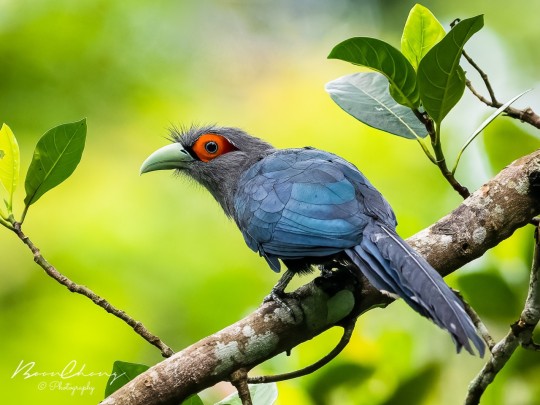

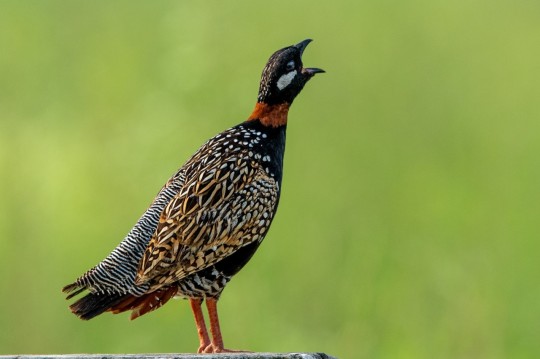



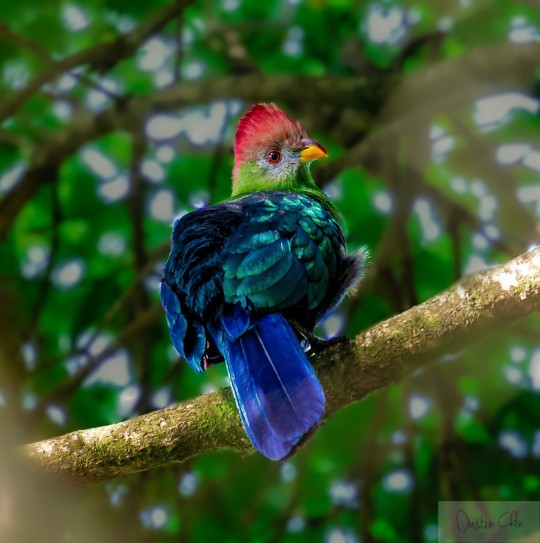


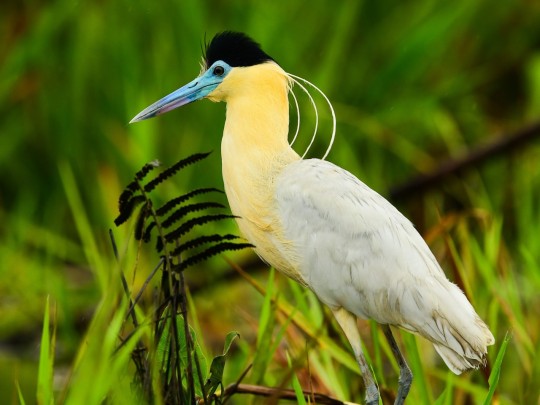


First 25% Summary - Part 2 (Cuculiformes to Piciformes, excluding Passeriformes)
Cuculiformes: Chestnut-bellied malkoha - Boon Chong Chen Falconiformes: Barred forest falcon - Andres Vasquez Noboa Galliformes: Black francolin - Vivek Saggar Gaviiformes: Common loon - Annie Lavoie Gruiformes: Black-tailed nativehen - John Daniels Mesitornithiformes: Brown mesite - Chris Courtaux Musophagiformes: Bannerman's turaco - Dustin Chen Nyctibiiformes: Andean potoo - Andres Vasquez Noboa Otidiformes: Buff-crested bustard - Luke Seitz Pelecaniformes: Capped heron - Xueping & Stephan Popp Phoenicopteriformes: Andean flamingo - Claudio Martin Piciformes: Channel-billed toucan - Silvia Faustino Linhares.
#birds#summary post#described#chestnut-bellied malkoha#barred forest falcon#black francolin#common loon#black-tailed nativehen#brown mesite#bannerman's turaco#andean potoo#buff-crested bustard#capped heron#andean flamingo#channel-billed toucan
96 notes
·
View notes
Text

THE LIFE OF BIRDS IN UGANDA
Day 1 of the 10 Days Uganda Birding Safari: Arrive in Uganda (Entebbe International Airport) & transfer to your lodge
Arrive at Entebbe International Airport which is the main gateway to Uganda after your long flight. You will be welcomed by our courteous guide who will then transfer you to your respective lodge for dinner and overnight.
Accommodation:
Luxury / Up market: Imperial Botanical Resort
Midrange / Standard: Cassia Lodge
Budget / Basic: Airport Guesthouse
Day 2 of the 10 Days Uganda Birding Safari: Encounter birds in Mabamba wetland & transfer to Lake Mburo National Park
After an early breakfast, embark on the transfer to Mabamba swamp for a memorable birding encounter. The canoe ride on Mabamba water logged area will expose you to magnificent flora and counts of birds that enjoy the naturally given food of snails and other water organisms. The rare shoebill stork is the major spot of the day while other species like Squacco, long Toed Plover, African water Rail, Goliath, Purple, Pygmy Goose, Herons, Yellow Billed Duck, Grey and Black Headed Heron, White Faced Whistling Duck, Moorhen, Black Crake, Allen’s Gallinule and African Jacana may be spotted in the area. The wildlife like elusive Sitatunga Antelope can also be spotted. After this activity, embark on the transfer to Lake Mburo National Park arriving in the evening for dinner and overnight.
Accommodation:
Luxury / Up market: Mihingo Safari Lodge
Midrange / Standard: Rwakobo Rock
Budget / Basic: Eagles Nest Mburo
Day 3 of the 10 Days Uganda Birding Safari: Encounter birds in Lake Mburo National Park
After an early morning breakfast, embark on the full day search of birds in the savannah landscape of Lake Mburo National Park. Explore the park on foot following the respective trails in the company of an armed ranger to save you from attacks of wild animals. Explore the Miriti and Warukiri swamps, Rubanga forest and the salt lick. The encounter offers you chances of spotting Rufous-bellied Heron, Bateleur, Coqui Francolin, Grey Crowned Crane, Brown-chested Lapwing, Emerald-spotted Wood-Dove, Black-bellied Bustard, Red-headed Lovebird, Ross’s Turaco, Brown Parrot, Green Wood-hoopoe, Common Scimitarbill, Bare-faced Go-away-bird, Red-faced Barbet, White-headed Barbet, Long-tailed Cisticola, Nubian Woodpecker, Red-shouldered Cuckoo-shrike, Finfoot, White-winged Tit and Yellow-breasted Apalis among other birds. The boat ride on Lake Mburo in the afternoon exposes you to counts of Kingfishers and African fish eagle.
Accommodation:
Luxury / Up market: Mihingo Safari Lodge
Midrange / Standard: Rwakobo Rock
Budget / Basic: Eagles Nest Mburo
Day 4 of the 10 Days Uganda Birding Safari: Transfer to Bwindi Impenetrable National Park and bird Ruhija in the evening.
After breakfast, embark on the transfer to Ruhija in Bwindi Impenetrable National Park which is listed as the number one birding spot in the whole of Africa. The journey is 235km passing through farmed landscapes of south western Uganda and the towns of Mbarara and Kabale before arriving in Bwindi for lunch and relaxation. In the afternoon, you will embark on the birding in forested hilly landscapes of Ruhija with opportunities of encountering Handsome Francolin Mountain Illadopsis, White-starred Robin, Grey Cuckoo Shrike, Ayres’s and Cassin’s Hawk Eagle, Augur Buzzard, Mountain Buzzard, Grauer’s Warbler, Red-throated Alethe, Mountain Masked, Collard, Dusky and Shelley’s Crimson wing, Chestnut Throated and Black – Throated Apalis, Dusky Tit, Red Faced Woodland Warbler, Stripe Breasted Tit among other bird species.
Accommodation:
Luxury / Up market: Ruhija Gorilla Safari Lodge
Midrange / Standard: Gorilla Mist Camp
Budget / Basic: Broadbill Forest Camp
Day 5 of the 10 Days Uganda Birding Safari: Bird in Umubwindi swamp.
After an early breakfast, embark on the birding encounter to the Umubwindi swamp which has got a legendary attachment that later resulted into the naming of the entire national park as Bwindi. The water logged environment of Umubwindi swamp is a haven for a range of birds among which include; African Green Broadbill, Purple-breasted, Red Faced Woodland Warbler, Grauer’s Rush Warbler, Grey Cuckooshrike, Mountain Illadopsis, Mountain Greenbul, Buff-Throated, Chestnut, Grey, Collard, Black Throated, Mountain Masked, Blue headed and Regal Sunbirds.
Accommodation:
Luxury / Up market: Ruhija Gorilla Safari Lodge
Midrange / Standard: Gorilla Mist Camp
Budget / Basic: Broadbill Forest Camp
Day 6 of the 10 Days Uganda Birding Safari: Bird Ruhija and Buhoma
Do short bird walk in Ruhija in the morning after which you will transfer to the northern sector of Bwindi (Buhoma) Upon arriving, you will bird with in Buhoma environs with chances of encountering; Rufous-chested Fluff tail, Handsome Francolin, Olive Long-tailed Cuckoo, Neumann’s Warbler, Red-chested Owlet among other bird species.
Accommodation:
Luxury / Up market: Buhoma Lodge
Midrange / Standard: The Haven Buhoma
Budget / Basic: Buhoma Community Rest Camp
Day 7 of the 10 Days Uganda Birding Safari: Bird Buhoma or optional gorilla trekking
Birding in Buhoma commences early in the morning and gives you opportunities of encountering Dusky Long-tailed Cuckoo, Rufous-chested Fluff tail, Pink Footed and Northern Puff Back, Honey Guide, Red Tailed, Toro Olive, Slender Billed, Little, Sheilley’s, Little Grey, Cabani’s White Throated and Yellow Wiskered Greenbuls, Cameroon Sombre, Elliots, Cardianl, Yellow Crested, Red Throated Allethe, Fine Banded woodpeckers, Red Faced Woodland Warbler, White Headed Wood Hopoe, Black faced Woodland Warbler, Waller’s, Stulman’s and Narro Tailed Starlings, Banded and White Chinned Prinia, Black Bee Eater, Blue Throated Brown, Northern Double Collard, Blue Headed, Collard, Olive, Green, olive Bellied, Rwenzori Doulbe Collard and Green Headed Sunbirds, Kivu Ground Thrush, Bar tailed Tragon, African Borad Bill, Neumann’s Warbler, Red-chested Owlet, White-tailed Blue Flycatcher and Pale-breasted Illadopsis. Retire for relaxation and overnight.
Accommodation:
Luxury / Up market: Buhoma Lodge
Midrange / Standard: The Haven Buhoma
Budget / Basic: Buhoma Community Rest Camp
Day 8 of the 10 Days Uganda Birding Safari: Transfer to Queen Elizabeth National Park & bird along the Kazinga channel.
After breakfast, you transfer to Queen Elizabeth National Park 160km about 5 hours’ drive. You will pass through the landscapes of Ishasha in the south of Queen Elizabeth where by chance you can encounter the tree climbing lions that dwell in the fig trees of Ishasha. You will arrive at Mweya for lunch after which you will embark on the birding encounter along the 45m long Kazinga channel using the launch. The two hour launch cruise will not only expose you to over 60 species of birds but also other Uganda safari offerings like Hippos, Nile Crocodiles not forgetting elephants, buffaloes and other antelopes drinking on the channel side. the birds that might be encountered include; the African Skimmer, African Spoonbill, Striated Heron, Herring Gull, Water Thick-knee, Lesser Black Backed Gull, Three-banded Plover, Green, Marsh, Wood and Common Sandpiper, Plain Martin, Gray-headed Gull, Lesser Swamp-Warbler among others.
Accommodation:
Luxury / Up market: Mweya Safari Lodge
Midrange / Standard: Enganzi Lodge
Budget / Basic: Pumba Safari Cottages
Day 9 of the 10 Days Uganda Birding Safari: Encounter birds in Queen Elizabeth National Park
Have a whole day encounter with birds in the varied ecosystems of Queen Elizabeth National Park. The birding encounter can be conducted in Mweya peninsular, environs of Lake Kikorongo, Maramagambo forest, savannah plains of Kasenyi, Katunguru bridge Area among other areas. Queen Elizabeth National Park exposes you to birds like; Temminck’s Courser, Rupell’s Griffon, Martial Eagle, White Headed, Lappet Faced Vultures, Blue Quail, Harlequin Quail, Small (Common) Buttonquail, African Crake, African Skimmer, Black Headed Gonolek, Verreaux’s Eagle-Owl, Amur Falcon, Lowland Akalat, Ovambo Sparrowhawk, Greater and Lesser Flamingo among others. The sights of wildlife like elephants, buffaloes, spotted Hyena, side stripped jackals, and Antelopes among others may not be missed.
Accommodation:
Luxury / Up market: Mweya Safari Lodge
Midrange / Standard: Enganzi Lodge
Budget / Basic: Pumba Safari Cottages
Day 10 of the 10 Days Uganda Birding Safari: Transfer back to Kampala.
After breakfast, you can take a short bird walk in the Maramagambo forest before returning to embark on the journey to Kampala.
End of the 10 Days Uganda
`ld��>�
0 notes
